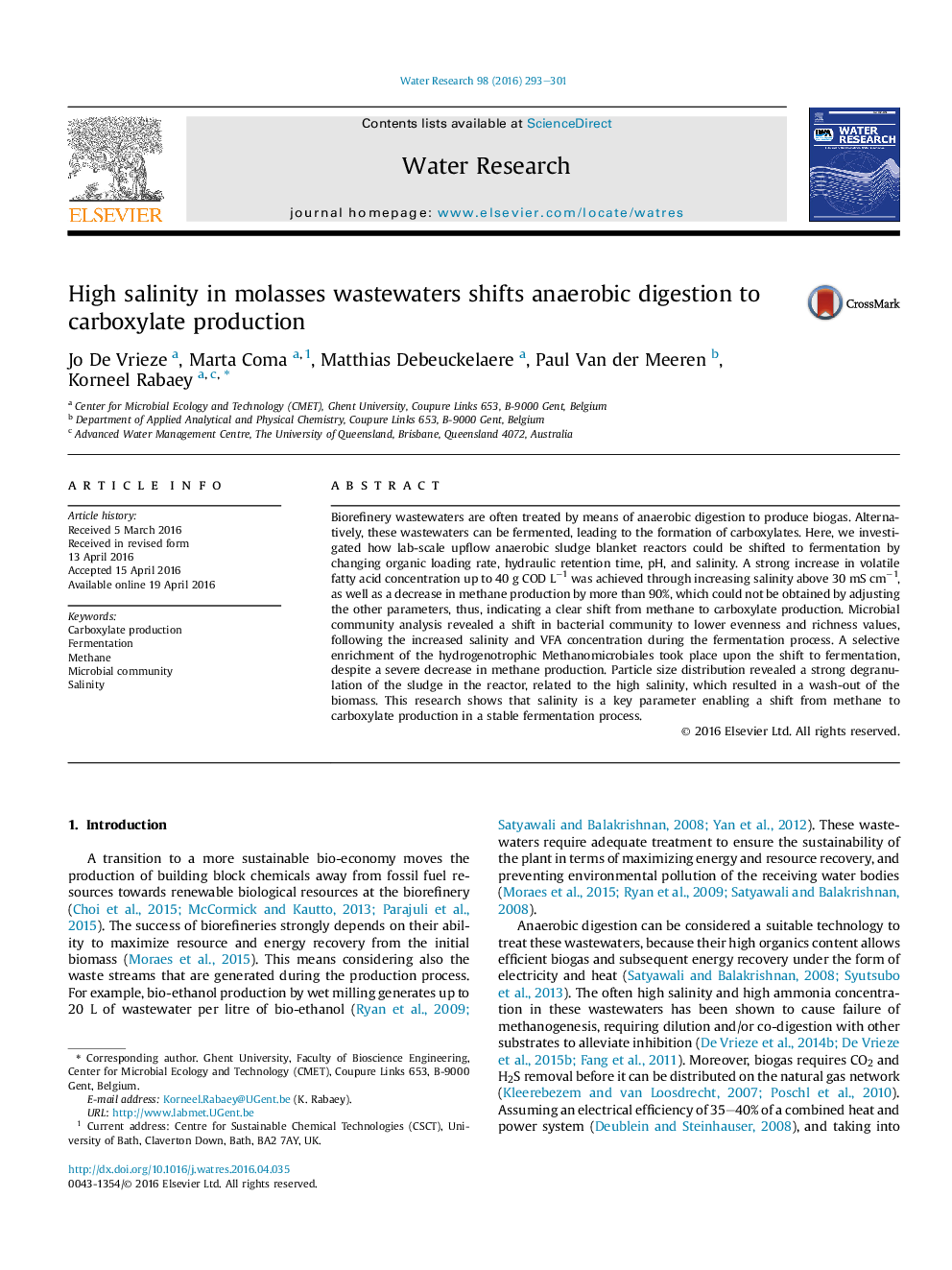| کد مقاله | کد نشریه | سال انتشار | مقاله انگلیسی | نسخه تمام متن |
|---|---|---|---|---|
| 4480995 | 1623070 | 2016 | 9 صفحه PDF | دانلود رایگان |
• Molasses wastewaters can be used for carboxylate production.
• Salinity was the key parameter to shift from methane to carboxylate production.
• Methanobacteriales were selectively enriched at high salinity.
• A strong disintegration of the granular sludge was observed.
• This approach will allow easy and fast application in full-scale systems.
Biorefinery wastewaters are often treated by means of anaerobic digestion to produce biogas. Alternatively, these wastewaters can be fermented, leading to the formation of carboxylates. Here, we investigated how lab-scale upflow anaerobic sludge blanket reactors could be shifted to fermentation by changing organic loading rate, hydraulic retention time, pH, and salinity. A strong increase in volatile fatty acid concentration up to 40 g COD L−1 was achieved through increasing salinity above 30 mS cm−1, as well as a decrease in methane production by more than 90%, which could not be obtained by adjusting the other parameters, thus, indicating a clear shift from methane to carboxylate production. Microbial community analysis revealed a shift in bacterial community to lower evenness and richness values, following the increased salinity and VFA concentration during the fermentation process. A selective enrichment of the hydrogenotrophic Methanomicrobiales took place upon the shift to fermentation, despite a severe decrease in methane production. Particle size distribution revealed a strong degranulation of the sludge in the reactor, related to the high salinity, which resulted in a wash-out of the biomass. This research shows that salinity is a key parameter enabling a shift from methane to carboxylate production in a stable fermentation process.
Figure optionsDownload high-quality image (136 K)Download as PowerPoint slide
Journal: Water Research - Volume 98, 1 July 2016, Pages 293–301
